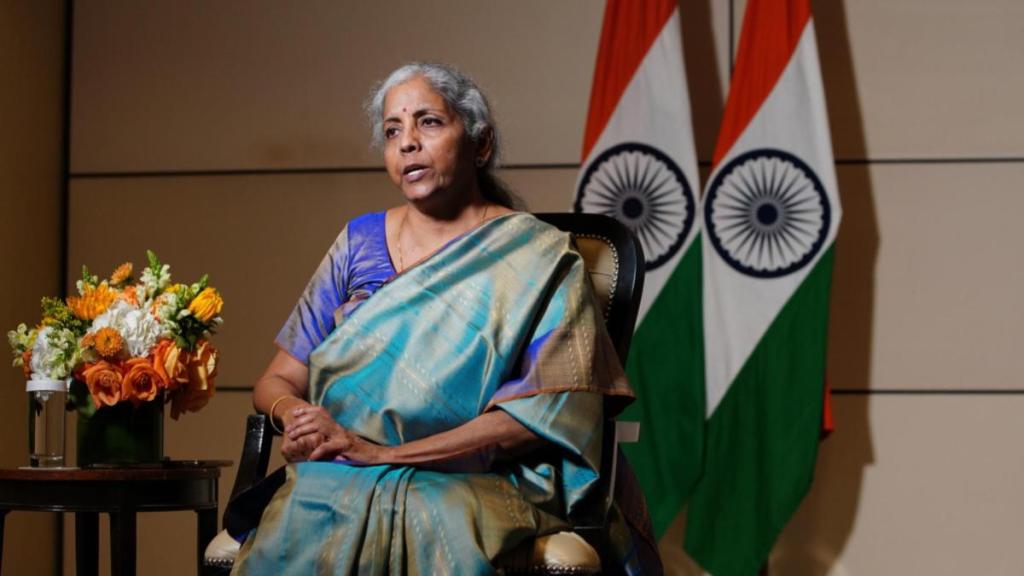By N Chandra Mohan,
With another stint at North Block in Modi 3.0, Nirmala Sitharaman will be the first Union finance minister to present seven consecutive Budgets. For all the media speculation on the thrust of her forthcoming Union Budget for FY25, its broad contours have already been laid out in the interim Budget presented by her on February 1. Nevertheless, there is considerable anticipation after President Droupadi Murmu, in her address to Parliament, stated that it would contain “historic steps” along with major economic decisions; that the government would accelerate the pace of reforms; and that the Budget would be an “effective document of the government’s far-reaching policies and futuristic vision” of a prosperous India or Viksit Bharat.
All the previous Budgets of Sitharaman have in fact been strong on futuristic vision statements that reflect Prime Minister Narendra Modi’s ambitions of making India a global economic power. He has envisioned the country becoming a global export-oriented manufacturing hub like the East Asian miracle economies. Since he first came to power in 2014, the PM has sought to attract big-ticket investments to build infrastructure like railways, ports, airports, power facilities, inland waterways, and highways. Modi has expressed an intention to build a diamond quadrilateral of bullet trains connecting the major metropolises in the country on the Tokaido Shinkansen model, dedicated freight and industrial corridors, and smart cities.
Sitharaman’s maiden Budget for FY20 and the Economic Survey for 2018-19 explicitly articulated Modi’s vision of making India a $5-trillion economy in five years from $2.83 trillion. This was to be done by undertaking structural economic reforms and investing heavily in physical and social infrastructure. The Budget accordingly proposed a number of initiatives as part of a framework of “kick-starting a virtuous cycle of domestic and foreign investments”. The $5-trillion objective, however, still remains elusive with current levels of $3.9 trillion. But all of this hasn’t come in the way of the government’s aspiration to make India a $10-trillion economy in the next eight years and a $30-trillion developed nation by 2047.
As domestic investments remain tepid, Sitharaman’s speech in Budget 2023 sounded Keynesian when she stated that a “virtuous cycle of investment requires public investment to crowd in private investment. At this stage, private investments seem to require that support to rise to their potential and to the needs of the economy. Public investment must continue to take the lead and pump-prime the private investment and demand”. The provenance of this sort of thinking goes back to the first Economic Survey — when the National Democratic Alliance regime came to power in 2014 — which argued that an increase in public investments would not crowd out private investments; that there was a case for targeted investments that can generate the largest spillovers for the economy.
The Union finance minister accordingly sought to provide a strong public capex push — with spending doubling from 1.7% of GDP in FY20 to 3.4% of GDP in the interim Budget for FY25. The railways, for instance, have secured 23% of the Centre’s capex. A targeted investment of Rs 1 in the railways is estimated to increase output in the economy by more than Rs 5 given the strong linkages this transportation sector has with manufacturing and services. However, the biggest challenges for this strategy are resources. As the government is committed to be fiscally responsible, obviously there are limits to financing these expenditures through larger market borrowings which only crowd out potential savings available for higher private investments.
Ultimately, it is budgetary surpluses that can provide the funding for Sitharaman’s public capex-driven strategy. The more the government’s revenues are pre-empted by non-plan revenue expenditures on subsidies, interest payments, wages and salaries, the less is available for higher public investments through the Budget. To be sure, Sitharaman’s Budget 2022 sought to raise higher non-tax revenues through a sweeping agenda of privatising public sector enterprises and asset monetisation which seeks to unlock the value of brownfield public sector assets. But the results have so far been underwhelming. Only Air India and Neelanchal Ispat Nigam Ltd have been privatised. Asset monetisation has been particularly challenging in the railways due to the lack of a regulator to ensure a level playing field between private and government-run trains.
All eyes will, therefore, be on Budget 2025 for its policies, reforms, and road map for a prosperous India. As private investments are sluggish, the earlier interim Budget indicated that lower borrowings by the Centre will facilitate larger availability of credit for India Inc. For meeting investment needs, the government is also expected to prepare the financial sector in terms of size, capacity skills, and regulatory framework. But kick-starting an upswing in private capex to drive overall growth still remains an unfinished agenda of Sitharaman’s Budgets. This depends on stable policies and regulations. A virtuous spiral cannot be set in motion so long as investors face serious difficulties in doing business on the ground, especially in the various states. To rekindle the depressed animal spirits of entrepreneurs, the government also must implement deep-going structural economic reforms to free up the land and labour markets.
The writer is an economic and business commentator based in New Delhi.
Disclaimer: Views expressed are personal and do not reflect the official position or policy of Financial Express Online. Reproducing this content without permission is prohibited.
















